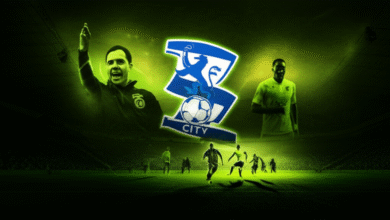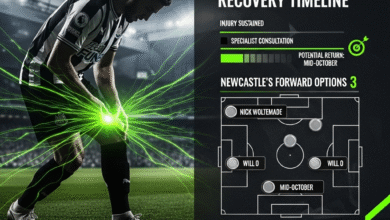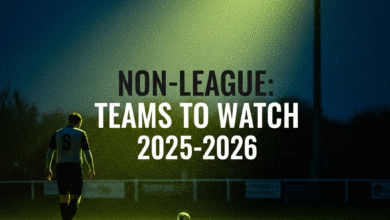Introduction:
Football, a popular sport worldwide, requires appropriate playing surfaces to allow players to showcase their skills while also protecting their safety. Whether it’s professional, non-league, or Sunday league football, the playing surface’s quality and composition have a significant impact on the overall experience. In this article, we will look at the materials commonly used in the construction of football pitches at various levels of the sport—professional, non-league, and Sunday league—highlighting their properties and assessing their impact on player performance and safety.
Football Pitches:
Professional football requires high-quality pitches that meet specific standards. These pitches usually use natural grass, specifically a hybrid turf called Desso GrassMaster. The Desso system combines natural grass with synthetic fibres embedded in the pitch’s playing surface. Its composition improves durability, stability, and overall pitch condition, even after extended use. The construction of professional pitches begins with levelling the ground and ensuring proper drainage. Sophisticated irrigation systems are installed to maintain turf quality. Following that, a carefully selected seed mix is sown, usually consisting of hardy, fine-leaved cultivars with excellent playing characteristics. These varieties are highly resistant to disease and wear, allowing the pitch to withstand heavy use without losing performance.
While not held to the same standards as professional pitches, they still require careful development to provide an appropriate playing surface. Many non-league clubs install synthetic turf, also known as 3G or 4G pitches. This type of playing surface is made of synthetic fibres with rubber or sand infill to improve stability and shock absorption. Non-league clubs benefit from 3G or 4G pitches for a variety of reasons. They can withstand repeated use, making them ideal for multi-purpose settings. These surfaces also allow play in a variety of weather conditions because they drain more efficiently than natural grass surfaces. Non-league clubs that cannot afford the extensive maintenance required for natural grass fields turn to synthetic turf as a cost-effective alternative.
Sunday League Football Pitches: Pitch sizes vary depending on available resources and managers’ dedication. Many Sunday league pitches still use natural grass surfaces, though they may not receive the same level of professional maintenance. Their quality is largely determined by the local council’s maintenance schedule or the efforts of individual volunteers assigned to each pitch. In some cases, Sunday league teams may play on school grounds or public parks. These areas may include natural grass pitches that are frequently shared by multiple sports and may not receive the same level of attention as professional or non-league pitches. As a result, they may occasionally have uneven surfaces or poor drainage, lowering the quality of play.
Improvements in Football Pitch Construction:
Football pitch construction has improved significantly due to technological and research advancements at all levels. The goal has been to provide players with high-quality, safe playing surfaces regardless of the level at which they compete. Let’s look at some of the most recent developments in football pitch construction.
Innovations in artificial turf have led to the widespread use of 3G and 4G pitches in both non-league and professional settings. These synthetic surfaces provide a consistent playing experience and require less maintenance than natural grass pitches. Advanced infill systems, such as cork or organic infills, have also been developed to address concerns about rubber infills’ safety and environmental impact.
Although natural grass is still the preferred choice for professional football, hybrid turf systems are increasingly popular. In addition to Desso GrassMaster, other hybrid systems, such as SISGrass, have entered the market. These systems combine natural grass with artificial fibres woven into the pitch, increasing durability and stability. Hybrid turf also promotes better root development and reduces the number of divots, which improves player safety.
Proper drainage is essential for keeping pitches playable in any weather conditions. Drainage system innovations have enabled faster water dispersal, lowering the risk of waterlogging and allowing matches to take place even after heavy rain. Advanced drainage technologies include the installation of perforated pipes beneath the playing surface to ensure that water is efficiently channelled away from the pitch.
Smart pitch technology has significantly improved football pitch management. These systems use sensors to monitor various aspects of the playing surface, such as moisture content, temperature, and wear patterns. The data gathered provides valuable insights into pitch maintenance requirements, allowing groundskeepers to make more informed decisions about irrigation, aeration, and maintenance practices. This technology maintains ideal pitch conditions throughout the season.
Benefits and Challenges of Different Pitch Surfaces:
Professional, non-league, and Sunday league football pitches use different materials, each with unique benefits and challenges.
Natural grass pitches are the preferred choice for professional football due to their superior performance and aesthetics. The organic feel and ball response of natural grass encourage fluid gameplay and technical skills. However, natural grass pitches necessitate extensive maintenance, such as regular mowing, fertilisation, and repair work. Extreme weather conditions can also degrade their quality, making them less durable and prone to wear.
Artificial turf pitches require less maintenance, can withstand heavy use, and provide consistent playing conditions regardless of weather. They can be used for longer periods without deterioration, allowing for more playing time. However, some players argue that the ball’s bounce and player movements on synthetic surfaces differ from those on natural grass, affecting technique and injury risk. Nonetheless, advances in infill systems and technology have alleviated many of these concerns.
Balancing factors for pitch surface selection include available resources, budget constraints, and level of play. While professional clubs adhere to specific standards and regulations, non-league and Sunday league teams must consider availability, affordability, and long-term maintenance costs when choosing the best playing surface.
The Search for Optimal Football Pitches:
To summarise, the composition and construction of football pitches have advanced significantly over the years, allowing players of all levels to enjoy better playing conditions. From professional stadiums to non-league venues and Sunday league fields, each level of play has its own set of resources, maintenance requirements, and budget constraints.
Professional football pitches, with their hybrid turfs and meticulous maintenance, offer the best playing conditions for top-tier players. These pitches are designed to withstand heavy use while maintaining the highest levels of performance and safety.
Non-league football relies on synthetic turf pitches, such as 3G and 4G surfaces, which are a less expensive alternative to natural grass while still providing reliable playing conditions. These pitches allow clubs to maximise playing time while also accommodating a variety of sports activities. Advances in artificial infill systems have addressed safety and environmental concerns, increasing the popularity of synthetic surfaces at all levels of play.
Sunday league football pitches, which often use natural grass surfaces, may face maintenance and availability issues. Shared fields and limited resources can lead to uneven surfaces and poor drainage. However, local councils and dedicated volunteers are working to improve the quality of these pitches, resulting in better playing conditions for grassroots football.
Technology has had a significant impact on the evolution of football pitch construction. Smart pitch systems provide real-time monitoring and data analysis, allowing pitch managers to make more informed decisions about maintenance and irrigation. Such advancements have transformed the way pitches are managed, ensuring the best conditions for players of all levels.
As football’s popularity grows at all levels, the search for ideal playing surfaces will continue. The goal will be to find a balance between performance, player safety, and maintenance requirements. Future advancements in pitch technology, such as more innovative infill systems and environmentally friendly solutions, will improve the football experience for both players and spectators.
Finally, regardless of skill level, a well-built and maintained football pitch serves as the foundation for the beautiful game to thrive. From the professional stage to grassroots football, the composition and construction of football pitches are critical to providing players with the opportunity to showcase their skills, enjoy the game, and foster a love of football at all levels of involvement.





